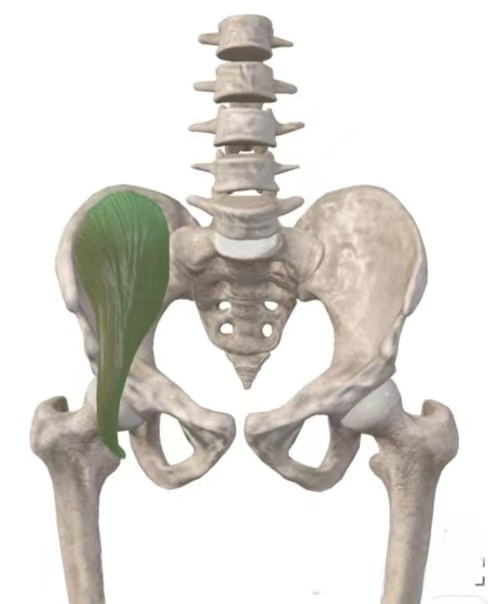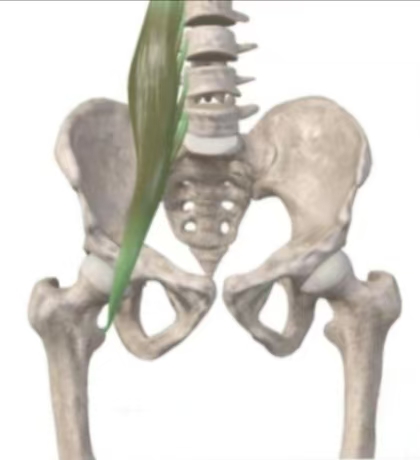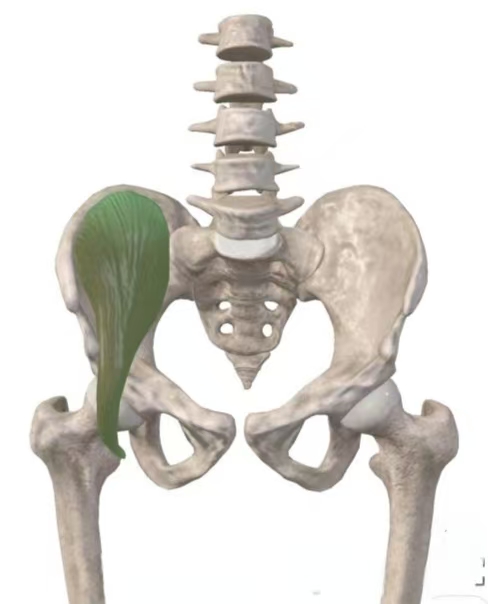
Low Back and Sacral Pain | Don’t Neglect the Iliopsoas Muscle
Medical Record
Name: Song XX; Sex: Female; Age: 60; Occupation: Retired
Chief Complaint: Low back and sacral pain for 3 weeks.
Present Illness: The patient developed discomfort in the lumbosacral region 3 weeks ago without obvious cause, predominantly on the right side. The pain worsens with prolonged sitting or when slouching, but there is no significant discomfort when sitting upright or lying flat. She occasionally experiences mild weakness in both lower limbs but no intermittent claudication. Numbness is present in the anterior-lateral lower half of both calves, without radiating pain or numbness in the lower limbs. No prior treatment has been sought. Appetite is normal, but she reports poor sleep with difficulty falling asleep, frequent dreams, and easy awakening. Stools are occasionally loose, and she experiences nocturia 2–3 times per night.
Past Medical History: History of hyperlipidemia; No hypertension, diabetes, or hereditary diseases
Supplementary Examination: None
Diagnosis: Low back pain
Specialized Fu’s Subcutaneous Needling (FSN) Physical Examination:Erector spinae (++); Quadratus lumborum (+++); Iliopsoas (+++)
FSN Treatment Process (First Visit: 2025.05.26):
The patient was placed in a prone position. Dr. He Qingtao, using a disposable Fu’s needle (invented by Dr. Fu Zhonghua), first treated the erector spinae and quadratus lumborum muscles. Following treatment, the patient reported approximately 50% pain relief compared to pre-treatment levels.The patient was then repositioned to a left lateral decubitus position for iliopsoas treatment, combined with reperfusion activities involving hip and knee flexion. Subsequently, the patient was instructed to sit and perform additional reperfusion movements with hip and knee flexion. After treatment, the patient reported no significant residual pain in the lumbosacral region.
Summary of the Case
The patient's low back pain was not severe, but the presentation was distinctive. The pain was localized near the sacroiliac joint and worsened when sitting in a slouched posture. Initial Fu’s Subcutaneous Needling (FSN) treatment targeting surrounding muscles (erector spinae and quadratus lumborum) provided only partial relief, suggesting that the iliopsoas muscle might be a key contributing factor.
This case highlights that when conventional FSN treatment of surrounding muscles fails to achieve significant pain relief, palpation of the iliopsoas should be considered.
The iliopsoas (a combination of the psoas major and iliacus muscles) originates from the inner surface of the iliac wing (iliac fossa) and descends through the pelvis, merging with the psoas tendon before inserting into the lesser trochanter of the femur.

Note: Image originates from “3Dbody Human Anatomy”
Origin: Iliac fossa
Insertion: Lesser trochanter of femur
Main function: Flexion and external rotation of the hip joint
Innervation: Branches of lumbar plexus (L1-L4)
The psoas major originates from the vertebral bodies and transverse processes of T12 to L5. As it descends through the anterior pelvis, it narrows and merges with the iliacus tendon, ultimately inserting into the lesser trochanter of the femur.

Note: Image originates from “3Dbody Human Anatomy”
Origin: Sides and transverse processes of lumbar vertebral bodies
Insertion: Lesser trochanter of femur
Primary actions: Flexion and external rotation of the hip joint ;When lower limbs are fixed, fexion of the trunk and pelvis (e.g., during sit-ups) .
Innervation: Branches of lumbar plexus
psoas minor originates from the lower thoracic and upper lumbar vertebrae (T12-L1)and inserts into the iliac fascia1(or more specifically, the iliopectineal eminence and pectineal line). Approximately 40%–60% of the population possesses this muscle, making it an anatomical variation rather than a core component of the iliopsoas complex.

Note: Image originates from “3Dbody Human Anatomy”
The iliopsoas is the primary flexor of the hip joint and plays a crucial role in stabilizing the spine and pelvis. Its contraction facilitates anterior pelvic tilt, increasing lumbar lordosis. Conversely, the erector spinae and gluteus maximus act as its antagonists, primarily responsible for spinal and hip extension.
Prolonged sitting, particularly in a slouched posture, can lead to iliopsoas tightness while weakening the erector spinae and gluteus maximus, ultimately contributing to lumbosacral pain.
Author Profile
Xu Jiahui
Master's candidate (Class of 2024), School of Acupuncture-Moxibustion and Rehabilitation Clinical Medicine, Guangzhou University of Chinese Medicine (Supervisor: Prof. Fu Zhonghua)
Clinical apprentice under Director He Qingtao at Guangdong Second Traditional Chinese Medicine Hospital
Currently undergoing standardized training at Guangdong Second Traditional Chinese Medicine Hospital
Participated in the Shenzhen Lecture Tour in November 2022




